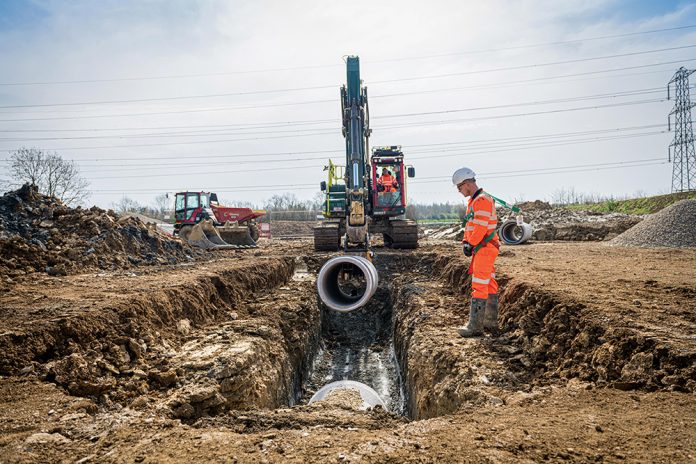A major new sewer pipeline is being delivered in Gloucestershire in an £8.5 million project by Thames Water to ease pressure on the network created by new homes and the pandemic.
Using ingenious techniques like ‘micro-tunnelling’, the 3.8km scheme involves the installation of 1,800 individual sections of pipe between Chesterton and Shorncote, and the construction of a new pumping station.
With new houses being built in Cirencester, and more people working from home, the project will increase wastewater capacity and help prevent some of the flooding problems which affected the Cotswolds earlier this year.
The project is being delivered by KCD, a joint venture between Kier and Clancy for the Thames Water Infrastructure Alliance. The combination of innovation and collaboration means the work is due to finish ahead of schedule this autumn.
Neil Titchener, Thames Water’s head of major projects, said: “This is a big investment by Thames Water that will help protect homes and the environment in the Cotswolds from the kind of weather-related sewer flooding we saw earlier this year.
“By increasing capacity, our network will be able to handle much larger volumes of water. Thanks to a combination of innovation and collaboration, we have overcome many challenges, and are on course to finish ahead of schedule this autumn.
“This has been a real joint effort between KCD and Thames Water, all the way from pre-design to delivery. It’s certainly set the benchmark for future large projects.”
Some of the challenges presented by the unique characteristics of the landscape included dealing with high groundwater levels in the Cotswold Water Park. Engineers have also dug out tons of rock, navigated existing utilities and infrastructure – including high pressure gas mains – and tunnelled under roads.
Ian Thompson, head of developer services at KCD, said: “The area has a high water table, so significant de-watering had to be factored in from the outset. In total we’ve had to put in well points for each 500 metres of trench.
“Navigating existing utilities and infrastructure has also been important. We’ve used a combination of open cut trenching across fields and then micro-tunnelling under the carriageway and high-pressure gas mains.
“Micro-tunnelling is a trenchless technique for pipe installation, which has allowed us to minimise disruption. It’s important to us that the project’s construction has as little impact as possible.
“While many sectors have seen projects delayed due to Covid, the criticality of utility work has meant that we’ve had to keep motoring – safely – through the crisis.”



